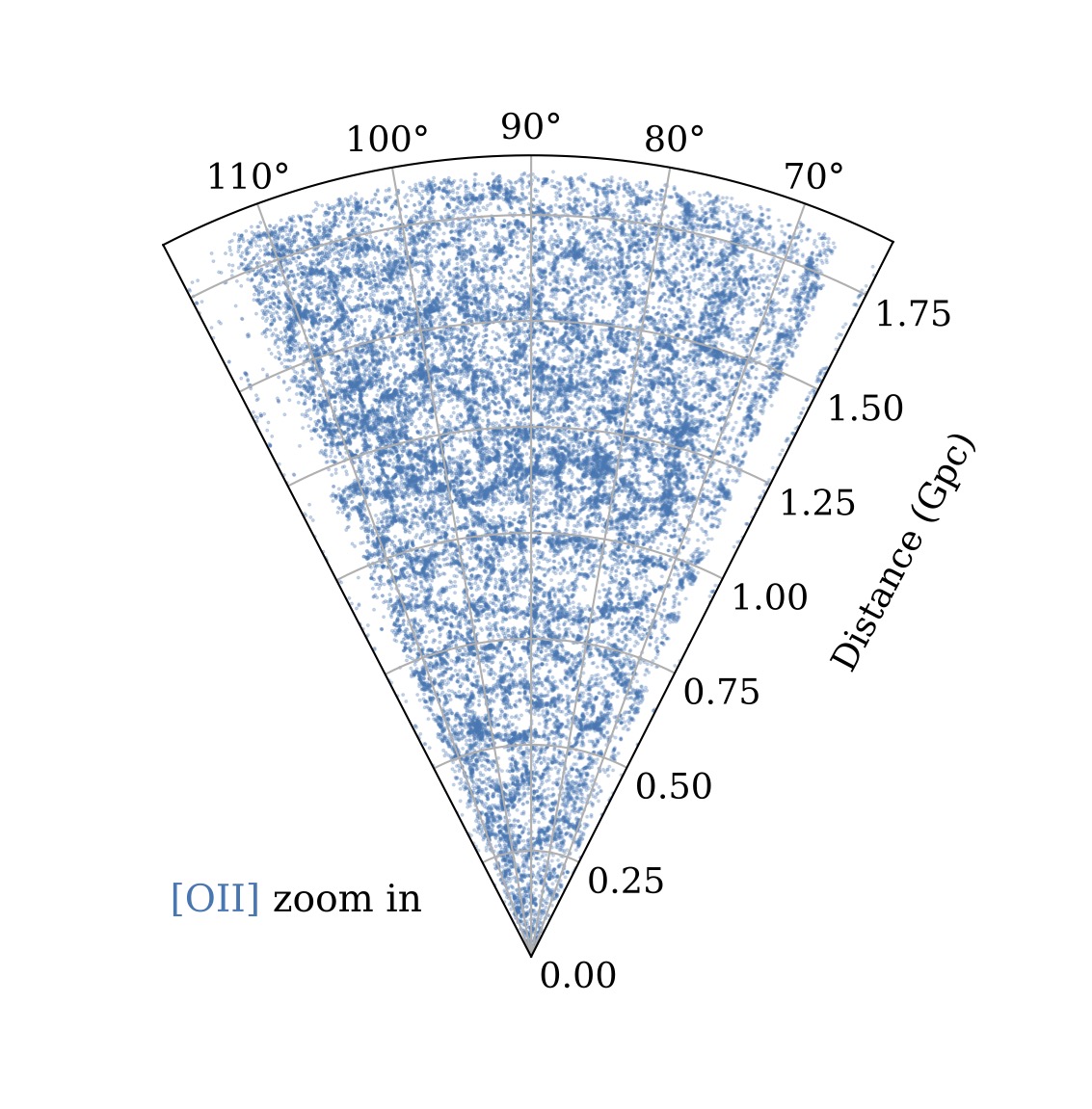
Galaxy redshift surveys
The field of extragalactic survey astronomy is relatively new, with the first efforts to construct three-dimensional maps of the distribution of galaxies on cosmological scales dating back to the decade of 1970. The CfA Redshift Survey and the Las Campanas Redshift Survey (LCRS), which contain a few thousand galaxies, provided us with the first views of the intricate clustering pattern of the large-scale structure of the Universe. Thanks to the development of multi-object spectrographs and improved detectors, these pioneering efforts were followed by samples with a dramatic increase in the number of objects and the quality of the data. Among these catalogues, the two-degree Field Galaxy Redshift Survey (2dFGRS) and the Sloan Digital Sky Survey (SDSS) played a pivotal role at mapping the large-scale galaxy distribution, enabling for the first time the use of large-scale galaxy clustering measurements as cosmological probes. Surveys like the WiggleZ Redshift Survey, the Galaxy and Mass Assembly survey (GAMA), the Baryon Oscillation Spectroscopic Survey (BOSS), the VIMOS Public Extragalactic Redshift Survey (VIPERS), the extended Baryon Oscillation Spectroscopic Survey (eBOSS), and the ongoing Hobby-Eberly Telescope Dark Energy Experiment (HETDEX) have pushed these efforts to probe increasingly larger volumes and redshift ranges. With these samples, galaxy clustering analyses have reached the maturity level required to become one of the most powerful cosmological probes.
The amount of data from galaxy surveys will increase by orders of magnitude over the next decade. Future surveys like the Dark Energy Spectroscopic Instrument (DESI) the ESA space mission Euclid and NASA’s Roman Space Telescope are examples of a new generation of galaxy redshift surveys that will provide more accurate measurements of the large-scale galaxy clustering pattern than ever before. The small statistical uncertainties that can be expected from these surveys demand a careful analysis of all potential systematic errors affecting the cosmological constraints that are derived from them, as these could dominate the final results.
Image Credit: Daniel Farrow (MPE) and the HETDEX team.